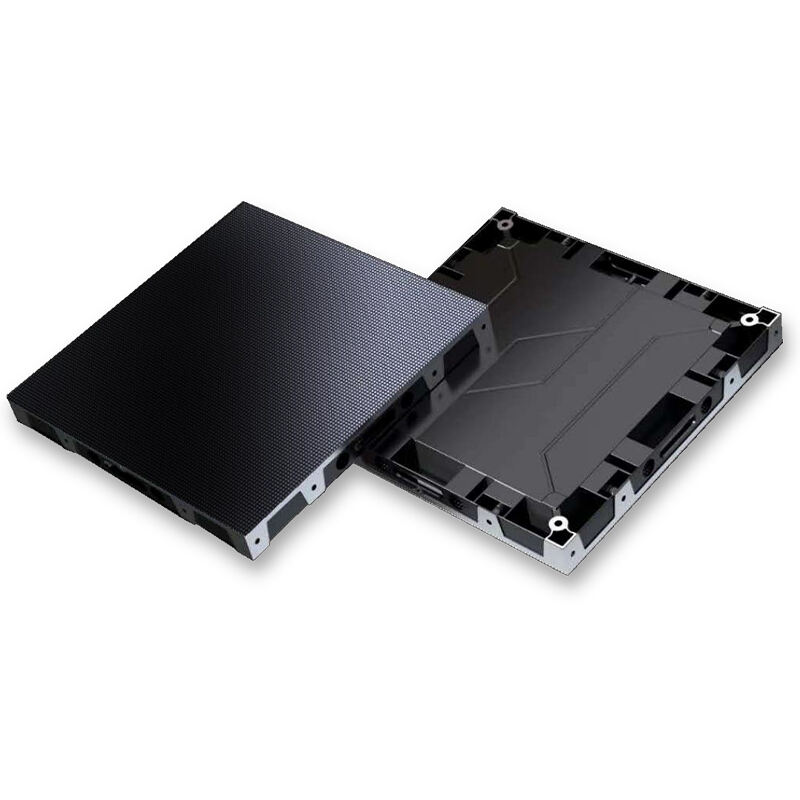Outdoor LED display: a combination of durability and high brightness
Understanding Outdoor LED Displays
Outdoor LED displays are essential tools in dynamic advertising and information dissemination. These displays are engineered to operate in open-air environments, leveraging light-emitting diode (LED) technology to deliver high-resolution visuals and vibrant colors. Commonly used in bustling locations such as city squares, sports arenas, and transport hubs, these screens serve as powerful mediums for advertising, public messaging, and entertainment, making them integral to modern communication strategies.
The advantages of outdoor LED displays include energy efficiency, high visibility under direct sunlight, and minimal maintenance compared to traditional advertising mediums. LED technology is known for its low power consumption, making it an environmentally friendly option. Additionally, the high brightness of these screens ensures that content remains visible even under the glaring sun, which is crucial for outdoor advertisement effectiveness. With robust construction, outdoor LED displays demand less frequent upkeep, providing a more reliable and cost-effective advertising solution.
High brightness outdoor LED displays are characterized by features that enhance their performance. These include superior pixel density and resolution, which ensure sharp and clear images that attract and retain attention. Moreover, adaptive brightness technology allows these screens to adjust their luminance according to ambient light, optimizing visibility and energy use efficiently. Such features make them versatile and valuable investments for different outdoor environments, ensuring impactful communication in varied scenarios.
Importance of High Brightness in Outdoor LED Displays
High brightness is crucial for outdoor LED displays, particularly in environments with considerable ambient light. It ensures that the content on the display stands out, even when competing against the sunlight and other distractions. In outdoor advertising or information dissemination, the brightness level is measured in nits; typically, a minimum of 5,000 nits is essential for clear visibility in direct sunlight. This ensures that the content remains vibrant and legible, without appearing washed out.
Brightness levels, key in ensuring visibility and clarity, become vital when comparing LED and LCD technologies. LED displays generally have superior brightness and contrast, making them more suitable for outdoor environments where intense lighting conditions prevail. Unlike LCD screens, LEDs offer higher luminance and better resistance to reflection and glare, thanks to advanced backlighting technologies. This makes LED displays preferable for outdoor advertising applications, such as an outdoor advertising led display screen or a waterproof outdoor LED screen, ensuring messages reach their audience effectively and consistently in varying environmental conditions.
Durability of Outdoor LED Displays
Durability is a key feature of outdoor LED displays, ensuring they withstand environmental challenges. These displays are constructed using robust materials such as reinforced plastics, aluminum frames, and tempered glass, which contribute significantly to their longevity. The sophisticated design also incorporates sturdy sealing elements to protect against dust and moisture, which is vital for prolonged outdoor use.
When it comes to weather resistance, outdoor LED displays excel due to their high waterproof ratings like IP65 or higher. This rating denotes complete protection against dust ingress and is resistant to water jets, making them ideal for adverse weather conditions. Additionally, these displays are engineered to tolerate extreme temperatures and resist impact from environmental factors such as wind and debris, further extending their functional lifespan.
To maintain and ensure longevity, regular maintenance of outdoor LED displays is critical. Implementing a structured cleaning protocol helps prevent dirt and dust accumulation, which can impact performance. Scheduled inspections are also essential to identify and rectify any potential issues before they escalate. For instance, checking for signs of moisture ingress or sealant degradation can mitigate costly repairs and downtime. By adhering to these maintenance practices, businesses can enjoy a reliable, long-lasting outdoor advertising solution.
Applications of High Brightness Outdoor LED Displays
High brightness outdoor LED displays play a significant role in the realm of advertising and marketing, serving as powerful tools to captivate and engage consumers. Their inherent ability to display sharp, vibrant content ensures that advertisements remain visible under diverse lighting conditions, making them essential for outdoor advertising spaces. For instance, large LED display screens for advertising outdoors can capture attention at busy intersections and shopping areas by displaying dynamic animations and colorful images that draw the eye.
In addition to advertising, outdoor LED screens are increasingly utilized for the dissemination of public information. These digital billboards often relay critical updates like traffic conditions, emergency announcements, and local event schedules. This application is instrumental in urban areas, where rapid and clear communication is vital. Outdoor advertising LED display screens are strategically placed in high-traffic environments to maximize the reach and efficacy of the shared information.
Moreover, entertainment events and public gatherings greatly benefit from the integration of outdoor LED displays. In scenarios such as outdoor concerts and festivals, these screens enhance the viewer's experience by projecting live performances and other visual content to audiences that are spread over large areas. Outdoor waterproof LED screens ensure that these events proceed smoothly regardless of weather conditions, maintaining the quality of multimedia presentations and engaging audiences effectively. This versatility has made LED screens for advertising outdoors not just a medium for promotions but also a backbone for modern outdoor events.
Comparison of Different Outdoor LED Display Technologies
When choosing an outdoor LED display, understanding pixel pitch is crucial as it directly impacts image clarity and the viewing distance. A smaller pixel pitch means the pixels are closer together, resulting in clearer images at closer distances, which is ideal for areas where the audience is nearby. Conversely, larger pixel pitches are better suited for longer viewing distances, making them a cost-effective choice for large-scale displays in expansive outdoor spaces. Thus, identifying the target audience's typical distance from the screen is essential in selecting the appropriate pixel pitch for optimal visual impact.
Selecting the right outdoor LED display involves considering factors such as location, content type, and audience. For instance, a location with a lot of natural light might require a display with higher brightness levels to ensure visibility, whereas a display meant for dynamic video content should offer high refresh rates for fluid movement. Additionally, audience demographics can inform decisions on display size and resolution, ensuring that the content reaches and engages as expected. This strategic approach ensures that businesses achieve their advertising goals, whether it's through a simple outdoor waterproof LED screen or a more elaborate setup.
Case studies highlight the successful implementation of outdoor advertising LED displays across various industries, demonstrating their effectiveness and return on investment (ROI). For example, a retail chain utilized high-brightness LED screens for window displays, significantly increasing foot traffic and sales. In another case, a city installed digital billboards with real-time updates for public transport information, which enhanced commuter experience and reduced waiting times. These examples underscore the diverse applications and the substantial benefits of investing in outdoor LED display technologies.
Conclusion: Making the Right Choice for Your Outdoor Display Needs
When selecting an outdoor LED display, it's crucial to evaluate your specific requirements, such as brightness, size, and intended purpose. Consider how these factors will influence your choice in creating a captivating visual experience. Finding the right balance between brightness and size will ensure your display is effective even under the most challenging outdoor conditions.
It's equally important to partner with reputable suppliers to ensure quality and ongoing support for your outdoor LED installations. A trusted supplier can provide not only superior product quality but also valuable technical assistance. This collaboration ensures your displays are installed correctly and maintained for optimal performance.
Looking to the future, outdoor LED technology is evolving with advancements in energy efficiency and connectivity. The rise of smart displays is poised to revolutionize the advertising industry by offering more dynamic and interactive content. Staying informed about these trends can help you make decisions that keep your business ahead of the curve in outdoor communication technologies.







 Hot News
Hot News